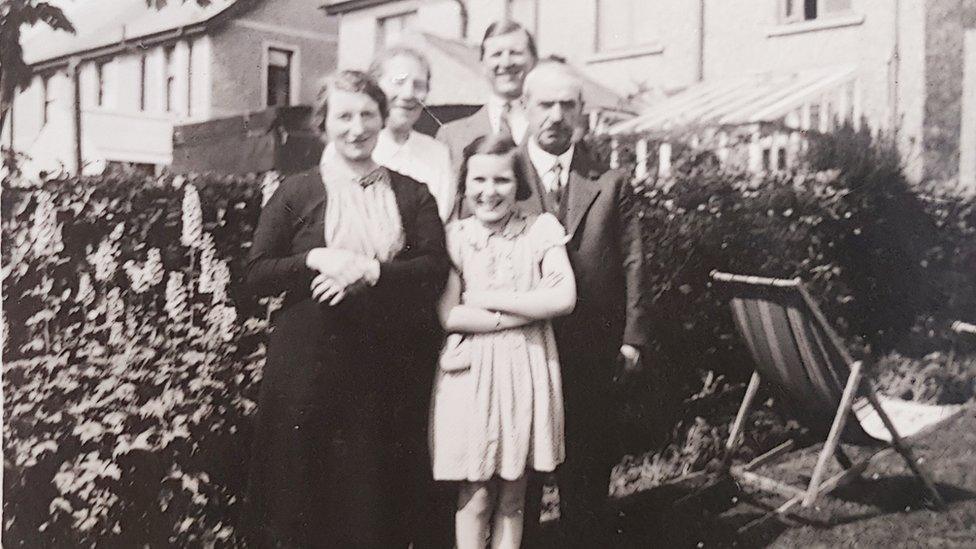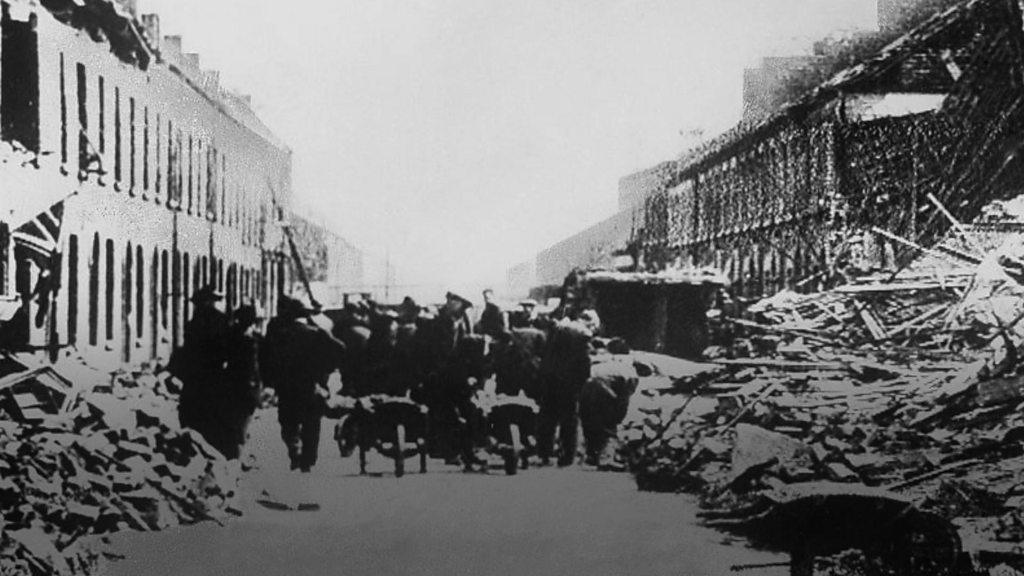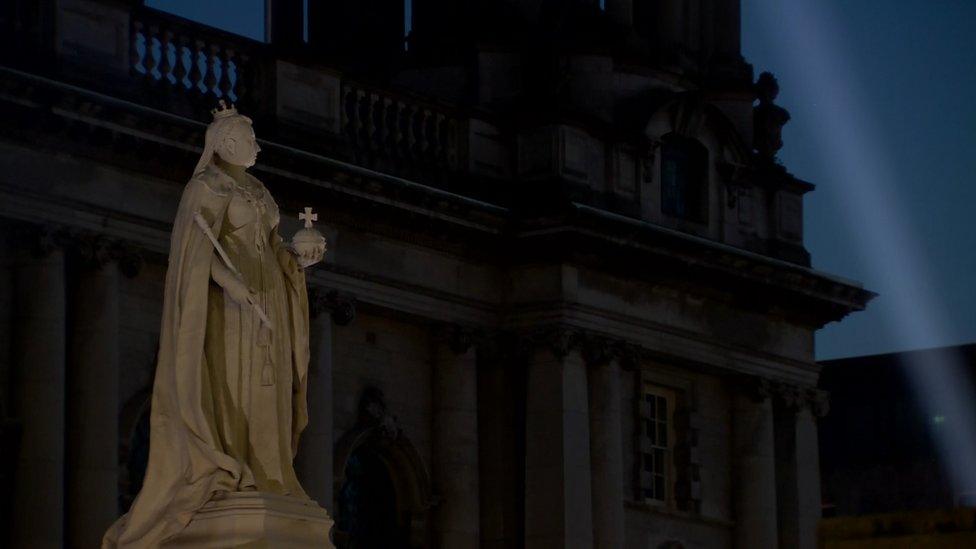Belfast Blitz: Remembering the ordinary people who lost their lives
- Published

Rescue workers search through the rubble of Eglington Street in Belfast, Northern Ireland, after a German Luftwaffe air raid, 7 May 1941
At 10:40 on the evening of Easter Tuesday 1941 air raid sirens sounded across Belfast, sending people across the city scrambling for safety - in one of the 200 public shelters in the city or the thousands of shelters or other "safe" spaces in private homes.
It was not the first time the alarm had sounded to signify the presence of Luftwaffe bombers over the city.
Just eight days earlier, eight planes destroyed the aircraft fuselage factory and damaged the docks, with 15 people ultimately killed as a result of that raid.
But the raid of 15-16 April - the Easter Tuesday Raid - was on another scale.
Belfast Blitz: Marking the lost lives 80 years on
A force of 180 bombers dropped 750 bombs - including 203 tonnes of high explosives - and 29,000 incendiaries over a five-hour period.
By the time the raid was over, at least 744 people had lost their lives, including some living in places such as Newtownards, Bangor and Londonderry.
It was not the last time Belfast would suffer. On 4-5 May, another raid, made up of 204 bombers, killed another 203 people and the following night 22 more died. Half of the city's housing was damaged over the course of all the raids.
Belfast was not properly prepared for the attacks, with too few shelters and not enough anti-aircraft guns.
In the subsequent years, this lack of preparation has often dominated the discussion about the Belfast Blitz, but a new project led by Alan Freeburn from the Northern Ireland War Memorial aims to shift the focus back to the ordinary men, women and children who lost their lives.
"These people are often seen as a statistic but they were human beings, people who lived and grew up in - or moved to - Belfast and died in Belfast," Mr Freeburn, the museum's collections officer, says.
"We can still see the physical scars of the Blitz in Belfast, that is what is left. But these people all had families and friends and they had to deal with their loss for the rest of their lives."
Mr Freeburn set out to find out more about those who died, their personal stories and the tales of those left behind.
"Through resources such as the Public Records Office and ancestry and genealogy websites I managed to get about 100 photos - which is about one tenth of the victims," he says
"A lot of the people I spoke to were relatives who ended up donating images and handwritten letters from before and after the Blitz. You can see the difference in those letters - post-Blitz is very much a grieving tone.
"They have never been published before, never seen the light of day."

A tragic Easter trip

Anna (left) and her husband Billy (back right) survived while Harriette, Dorothy and Billy were killed along with Dot and Isa
Just before Easter 1941, Anna and Billy Burdett and their 12-year-old daughter, Dorothy, returned to Belfast from England to visit Anna's family.
The couple, who ran a children's home, stayed with Anna's parents, William and Harriette Denby, and her sisters, Dot and Isa, at Evelyn Gardens, off the Cavehill Road, in the north of the city.
When the bombing began, 76-year-old William and 72-year-old Harriette took refuge under the stairs along with Dorothy, Dot and Isa.
There wasn't enough room for Anna or Billy, so they sheltered elsewhere, a twist of fate that would save their lives.
When the house was hit William, Harriette, Dorothy, 36-year-old Dot and 41-year-old Isa were all killed. Anna and Billy were buried up their necks in sewage but were rescued and survived.
Anna and Billy returned to England and continued running the children's home. After the war, when the first girl from the home got married Billy gave her away, having lost his only daughter.

Dot and Isa, with Dorothy when she was a toddler

It has been reported that on Easter Tuesday, Belfast suffered the highest loss of life of any city in the UK in a single raid.
But Mr Freeburn's research casts doubt on this.
"Through cross-referencing a number of different sources I have been able to get the most accurate number of people who died in the Blitz," he says.
"There will always be people who will slip through the net but I am able to say at least 987 were killed across all raids."
That contrasts with the figure that is often given of more than 900 killed on Easter Tuesday alone.

Royal Welch Fusiliers assist in clearing bomb damage in Belfast, Northern Ireland, 7 May 1941
The database Mr Freeburn has compiled is, he believes, the most accurate list of those killed and includes 222 children aged 16 or under. The youngest victim was just six-weeks-old.
It remains a high death toll - a shocking number of people killed in just a few weeks.
"It says a lot about how these people are forgotten that there is no Blitz memorial in Belfast," Mr Freeburn says.
"There are plans for one but there isn't one yet.
"Liverpool, Clydebank and Portsmouth all have a memorial to their victims of the Blitz. In Bristol, the bombed-out ruins of St Peter's Church were left standing with added memorial plaques to the civilians who were killed.
"But there is no such equivalent in Belfast."
Related topics
- Published15 April 2021

- Published15 April 2021
